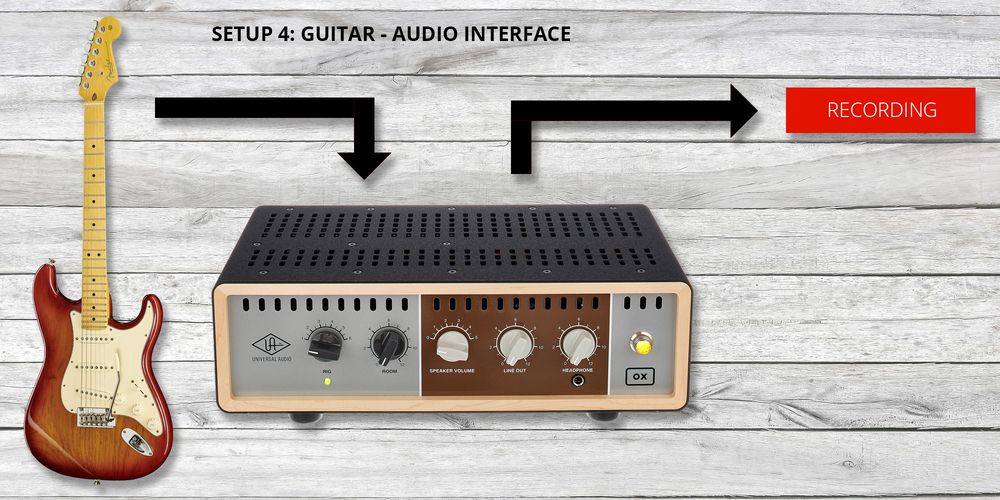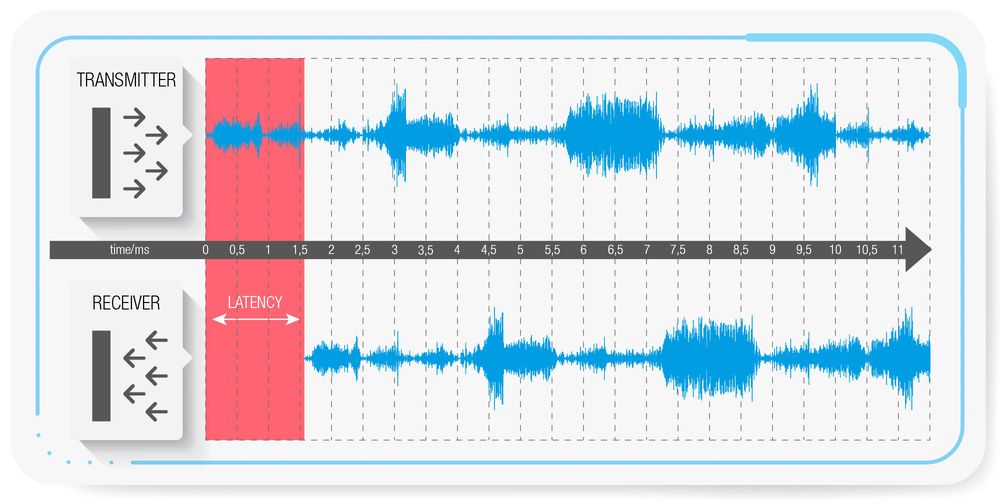8. Setup 4: Guitar - Audio Interface - Modeling Software
For those looking to record with minimal gear, all you really need is an audio interface connected to your computer via USB. Plug your guitar directly into the audio interface and use sounds loaded as plug-ins in your computer.

But for this to work, the audio interface needs what's called a Hi-Z input, designed for high-impedance signals like those from guitar pickups. Then, you can operate modeling software on your computer, using it as the sound generator for amp sounds and effects. Fundamentally, this modeling software isn't much different from an amp modeler, except it's practically parked right on your computer. Popular choices in this category include Native Instruments' Guitar Rig or IK Multimedia's Amplitube. The advantage here is that while you're recording, you can hear and capture the sound with the amp plug-in, while also having the option to save the raw guitar signal (without the modeling software). This way, during the mixing phase, you have all options open. You can tweak the guitar sound extensively: adjust the amp sound, switch to a different amp, modify effects, and much more. For instance, if during the final mix, you realize the rhythm guitar's distortion was too high, you can easily adjust it.
One downside is that operating plug-ins on the computer might cause a certain signal delay (latency), which depends on the audio interface's quality and the computer's performance.

When using modeling software for guitar, the demands on the audio interface are high because it needs to convert the analogue guitar signal into a digital one for computer processing. Then, the processed digital signal leaves the computer and returns to the analogue world through the audio interface. In the worst-case scenario, there might be delays at three points in the signal chain: at input, during computer processing, and at output. Therefore, the computer should have some horsepower under the hood; otherwise, glitches may occur. Low latency also stresses the CPU, which constantly manages the audio input and output. By the way, every guitarist perceives latency and signal delays differently, so it's essential to experiment to find your comfort zone. Some audio interfaces (like the Universal Audio Apollo series) have their own processors onboard, allowing direct control of plug-in sounds without noticeable signal delays. Here, the playing experience is just like using an amp modeler.
UAD Marshall Plexi Super Lead
AmpliTube Marshall SLP
Your Contacts
Product Highlights
-
DI Boxes
-
USB Audio Interfaces
-
Firewire Audio Interfaces
-
Electric Guitar Preamps
-
Amp Microphones
Recommended categories
Do you like what you're seeing?






